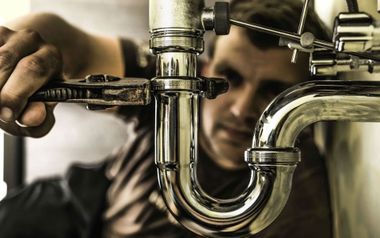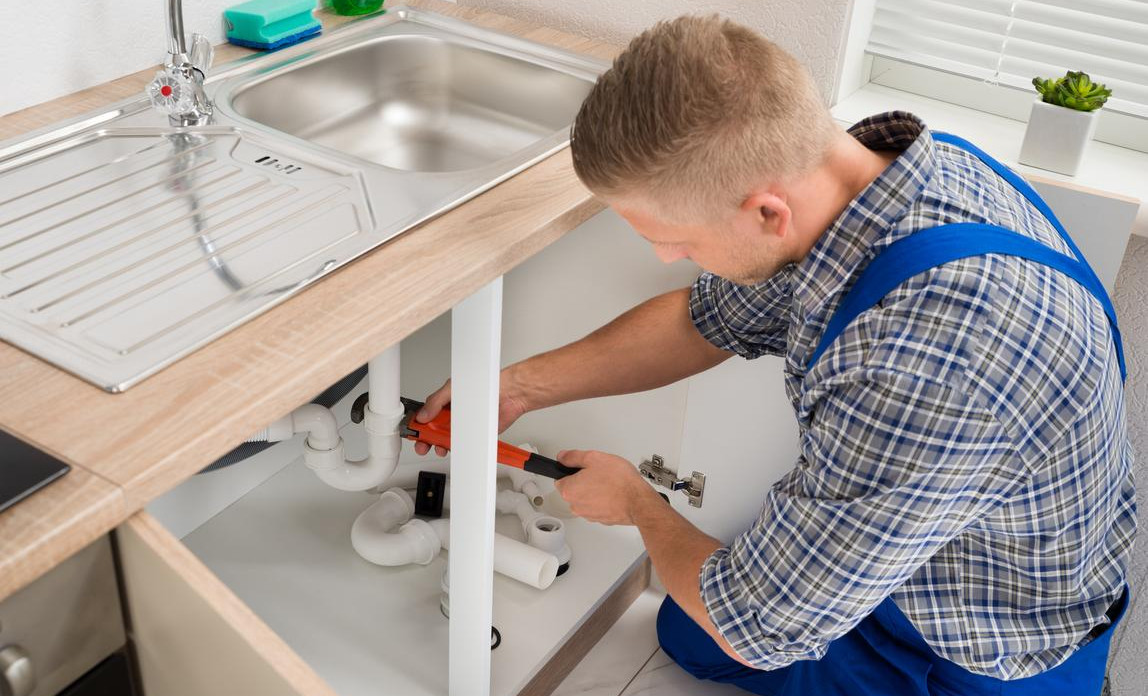The Key Components of Your Home's Plumbing System
The Key Components of Your Home's Plumbing System
Blog Article
Have you been trying to locate know-how about Anatomy of a House: Understanding the Components?

Recognizing how your home's plumbing system functions is crucial for every home owner. From supplying clean water for drinking, cooking, and showering to securely removing wastewater, a properly maintained plumbing system is important for your family members's health and comfort. In this comprehensive guide, we'll check out the detailed network that makes up your home's plumbing and offer ideas on upkeep, upgrades, and dealing with typical concerns.
Intro
Your home's plumbing system is more than just a network of pipes; it's a complex system that ensures you have access to tidy water and reliable wastewater elimination. Recognizing its components and exactly how they interact can aid you protect against costly repair work and guarantee whatever runs smoothly.
Standard Elements of a Pipes System
Pipelines and Tubes
At the heart of your pipes system are the pipes and tubing that bring water throughout your home. These can be made from different materials such as copper, PVC, or PEX, each with its advantages in terms of resilience and cost-effectiveness.
Fixtures: Sinks, Toilets, Showers, etc.
Fixtures like sinks, toilets, showers, and bathtubs are where water is made use of in your house. Recognizing exactly how these fixtures connect to the pipes system helps in diagnosing issues and preparing upgrades.
Valves and Shut-off Factors
Shutoffs manage the circulation of water in your plumbing system. Shut-off valves are important during emergency situations or when you require to make repair services, enabling you to isolate parts of the system without disrupting water circulation to the whole residence.
Supply Of Water System
Main Water Line
The main water line attaches your home to the metropolitan water or an exclusive well. It's where water enters your home and is dispersed to different fixtures.
Water Meter and Pressure Regulator
The water meter actions your water use, while a stress regulator ensures that water moves at a secure stress throughout your home's plumbing system, preventing damages to pipes and fixtures.
Cold Water vs. Warm water Lines
Comprehending the distinction in between cold water lines, which provide water directly from the main, and warm water lines, which bring heated water from the hot water heater, aids in fixing and planning for upgrades.
Water drainage System
Drain Pipes and Traps
Drain pipelines bring wastewater away from sinks, showers, and commodes to the drain or septic tank. Catches avoid sewer gases from entering your home and additionally trap particles that might cause obstructions.
Ventilation Pipes
Ventilation pipelines enable air right into the drain system, preventing suction that can slow water drainage and trigger traps to vacant. Appropriate ventilation is necessary for maintaining the honesty of your pipes system.
Importance of Appropriate Drain
Making sure proper drainage prevents backups and water damages. Frequently cleansing drains and preserving traps can stop pricey repair services and extend the life of your pipes system.
Water Heating System
Kinds Of Hot Water Heater
Water heaters can be tankless or standard tank-style. Tankless heating systems warmth water as needed, while storage tanks keep warmed water for immediate use.
Upgrading Your Plumbing System
Reasons for Updating
Updating to water-efficient components or replacing old pipes can enhance water high quality, decrease water bills, and enhance the worth of your home.
Modern Pipes Technologies and Their Benefits
Check out modern technologies like smart leak detectors, water-saving commodes, and energy-efficient hot water heater that can save money and minimize ecological influence.
Cost Considerations and ROI
Compute the upfront expenses versus long-lasting financial savings when thinking about pipes upgrades. Several upgrades spend for themselves through decreased utility expenses and less repair services.
Just How Water Heaters Attach to the Plumbing System
Understanding how water heaters link to both the cold water supply and warm water circulation lines assists in identifying concerns like not enough warm water or leakages.
Upkeep Tips for Water Heaters
Consistently purging your hot water heater to remove debris, examining the temperature level settings, and examining for leaks can extend its lifespan and improve power performance.
Usual Plumbing Problems
Leaks and Their Causes
Leakages can take place as a result of maturing pipes, loose fittings, or high water stress. Addressing leakages without delay protects against water damages and mold growth.
Clogs and Blockages
Clogs in drains pipes and commodes are commonly triggered by flushing non-flushable items or a buildup of oil and hair. Utilizing drain screens and bearing in mind what decreases your drains can avoid clogs.
Indicators of Pipes Problems to Watch For
Low tide stress, slow-moving drains, foul odors, or unusually high water bills are indicators of possible pipes problems that need to be attended to immediately.
Plumbing Upkeep Tips
Regular Evaluations and Checks
Set up yearly plumbing inspections to catch problems early. Seek indications of leakages, corrosion, or mineral build-up in taps and showerheads.
DIY Upkeep Tasks
Simple tasks like cleaning tap aerators, looking for toilet leakages making use of dye tablet computers, or protecting exposed pipes in cold environments can avoid significant plumbing concerns.
When to Call a Professional Plumbing Professional
Know when a plumbing concern needs specialist know-how. Attempting intricate repair work without correct understanding can bring about more damages and higher repair service costs.
Tips for Decreasing Water Use
Simple behaviors like fixing leakages without delay, taking much shorter showers, and running full lots of washing and dishes can preserve water and reduced your energy bills.
Eco-Friendly Plumbing Options
Take into consideration sustainable plumbing products like bamboo for floor covering, which is durable and environmentally friendly, or recycled glass for kitchen counters.
Emergency situation Preparedness
Steps to Take Throughout a Pipes Emergency
Know where your shut-off valves are located and just how to turn off the supply of water in case of a burst pipeline or significant leakage.
Significance of Having Emergency Calls Convenient
Keep contact info for regional plumbing professionals or emergency services easily available for fast action throughout a pipes situation.
Environmental Impact and Conservation
Water-Saving Fixtures and Home Appliances
Setting up low-flow taps, showerheads, and commodes can significantly reduce water usage without sacrificing performance.
DIY Emergency Fixes (When Appropriate).
Momentary solutions like making use of air duct tape to spot a dripping pipe or putting a pail under a trickling tap can lessen damages up until an expert plumbing professional gets here.
Conclusion.
Understanding the anatomy of your home's plumbing system encourages you to keep it properly, conserving money and time on repairs. By complying with regular maintenance regimens and remaining notified regarding contemporary plumbing technologies, you can guarantee your pipes system operates efficiently for years ahead.
HOW YOUR PLUMBING SYSTEM WORKS
Which Pipes Do What?
Blue lines = fresh water supply entering the building Red lines = hot water supply entering the building Grey lines = pipes carrying waste away from the building and venting pipes carrying gases away from the building (through the roof) YOUR MAIN PLUMBING SYSTEMS
There are two main plumbing systems that support your home s basic plumbing needs one that brings clean water into your home, and one that sends dirty water away from your home. Connected to the toilet, bath, shower, and other faucets in your home, these two systems keep your water flowing in the right directions.
ACCESSING FRESH WATER
Fresh and clean water is brought into your home through the main water supply line . Filtered through one pipe, this water is pressured to flow into the various fixtures in your home at any given time.
This water can be sourced from a well located on your property, a pond or river (mostly cottages), or, as in most cases, from the city s municipal water treatment centre. However, it is important to note that water that is untreated, such as the water siphoned from ponds or rivers, may not be safe to drink. Personal water supplies always need to be treated for hardness and contaminants before consumed.
MUNICIPAL WATER SUPPLIES
Improve taste and odour Remove sediment Eliminate hardness Reduce chlorine COLD WATER SUPPLY VS. HOT WATER SUPPLY
Cold water flows into your home or building through the service line, which then distributes hot or cold water to your fixtures. This line is most commonly run through a central column that runs floor to floor. Hot water runs in short and straight pipes as the longer the pipeline, the more heat that will be lost in the transfer. Having shorter pipes also allows residents to access hot water more quickly.
WASTE WATER SYSTEM
Your wastewater system is divided into two parts pipes that send wastewater away from your home and venting pipes that send sewer gas away from your home. Sewage water travels through pipes that flush the water and waste towards local sewers that are operated and managed by your city or town. Most sewer systems rely on gravity to move the wastewater to where it needs to go.
The further away from your toilet or sink, the larger wastewater pipes become. This allows for waste to be disposed of from various parts of your home or business at once without pipe blockages. The angle and flow of these pipes are also essential for keeping your waste pipes clear of build up.
https://harrisplumbing.ca/how-your-home-plumbing-system-works/

I stumbled upon that write up about while doing a search on the internet. Feel free to take the time to promote this blog post if you appreciated it. Thanks so much for going through it.
Click On This Link Report this page